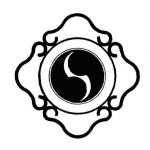History

Kenso Ryu Jujutsu is een oorspronkelijke school waarbij de traditionele Samurai waarden en normen hoog in het vaandel staan. De school stamt af van Asayama Ichiden Ryu en Mukei Ryu, die in 1880 zijn samengebracht door Kamatarou Takeishi. De focus ligt op arm- en elleboogcontroletechnieken, middels het oefenen van kata. Daar ook slag-, stoot-, nage- en katamatechnieken worden beoefend, mag het als een volwaardig systeem worden beschouwd.
De genealogie is als volgt:
KENSOU RYU Jujutsu GYAKUTE DO
Founder Mr. Kamataro TAKEISHI
2nd Mr. Keiichiro SHIMIZU
3rd Mr. Shouichiro MOCHIZUKI
4th Mr. Seizou MAEHARA
5th Mr. Chushudo TANAKA
Op dit moment is Makoto Kurabe Sensei (6e dan) de hoogst gegradueerde wereldwijd. Tevens is hij voorzitter van de Europese Ko-Ryu Jujutsu Federation

Gyakute-Do is based and derived on Kenso-ryu Jujutsu, which was established in Meiji period. The founder TAKEISHI Kentaro (1878 – 1993) mastered several old style Jujutsu such as Kenso-ryu, Asayama Ichiden-ryu and Mukei-ryu Jujutsu. Gyakute Jutsu specializes more in wrist/arm joint technique).
Later, sensei Takeishi moved to Tokyo and started teaching this discipline to his students in the area.
Since its foundation, KENSO RYU JUJUTSU was transferred over 4 generations and has made a certain influence to Japanese BUJUTSU:
Founder KentaroTAKEISHI
2nd Keiichiro SHIMIZU
3rd Shouichiro MOCHIZUKI
4th Seizou MAEHARA
5th Chushudo TANAKA
Unfortunately after death of Mr. Chushudo TANAKA in 1993, no one took over Gyakute-do,
and, accordingly, ended its short life from the history of Japanese martial arts.
GYAKUTE DO uses the method of most effective lever theory to use less power to defeat the enemy and it concentrates on joint lock techniques to wrist/arm as the weakest joints in the human body. Appling wrist joint locks onto these weakest joints, one can throw or control the attacker by less power comparing to the other similar martial arts. If such wrist joint lock works successfully, the attacker should throw himself. That is the only way to escape from thestrong pain, otherwise the joint bone would be broken.
GYAKUTE DO techniques are neither so sophisticated nor beautiful as its brother Jujutsu style of AIKI DO. Its techniques are still wild and carry over the essence of old fighting epoque.
It is consist of both Hit/Kick and NAGE, KATAME techniques which makes the style a complete fighting technique.
Such being the case, from every direction such as Karate, Judo , people can master GYAKUTE DO techniques smoothly.
The most unique point of GYAKUTE DO is :
Damage level given to Attacker is quite controrable. This is ideal as Self Defence Technique because you do not hurt Attacker too much. If you release Attacker in the earlier stage there is no remaining damage.
1.Basic Techniques: KAMAE (positioning), Ukemi ( guarding technique ), Hit and Kick technique
2.Original KATA: There are 61 KATA ( techniques ) categorized into 4 types, i.e:
NUKI ( release )
NAGE ( throw )
RENKO ( arrest )
FUDOU (control)
Those KATA are classified into 4 levels such as
level A : basic and rather easy KATA
level B : needs a delicate know-how to be mastered
level C : application techniques of Level B
level D : exclusively high level and difficult KATA
Those techniques are quite unique of this Ryu( school), and differ from the other Jujutsu styles.
Introductie – Kenso Jutsu
Kenso-Ryu ook wel Gyakutedo genoemd, de weg van de omgekeerde hand, is een stijl die gericht is op het verdedigen tegen aanvallen en het controleren van de tegenstander. Daarbij is het uitgangspunt geen kracht maar techniek te gebruiken. De techniek van het manipuleren van vooral de gewrichten zoals van de vingers, pols, elleboog en schouders lijkt soms magisch: Zonder noemenswaardige kracht kan een tegenstander uitgeschakeld worden.
De toegepaste technieken zijn voor de tegenstander uiterst pijnlijk. Deze krijgkunst is dus niet geschikt voor jongere deelnemers. Omdat er geen kracht nodig is kan deze stijl tot op hoge leeftijd beoefend worden.
De oorsprong van de stijl ligt zoals gezegd in de tijd van de Samurai. Deze krijgsheren dienden zich ook onbewapend te kunnen verdedigen. Het harnas van de Samurai heeft zwakke plekken op de scharnierpunten van het lichaam waarop de technieken gericht zijn.
Omdat jujutsu een oude vorm is, leert u ook basistechnieken van alle later ontstane vormen van krijgskunst. Het schoppen en slaan van Karate, worpen en valtechnieken uit het Judo, de worpen en klemtechnieken uit het Aikido. Enige voorkennis van andere vechtsporten is plezierig maar niet noodzakelijk. De stijl wordt in traditionele kleding Gi (jasje) en Hakama (broekrok met plooien) beoefend.













